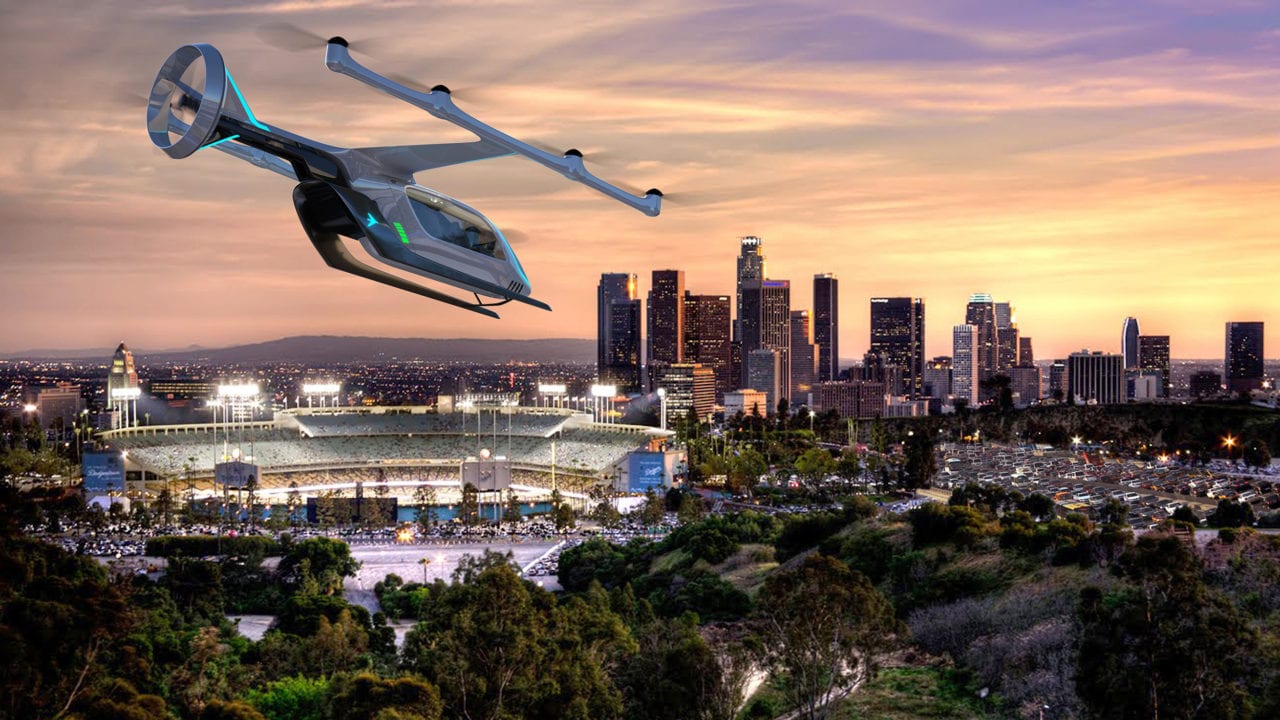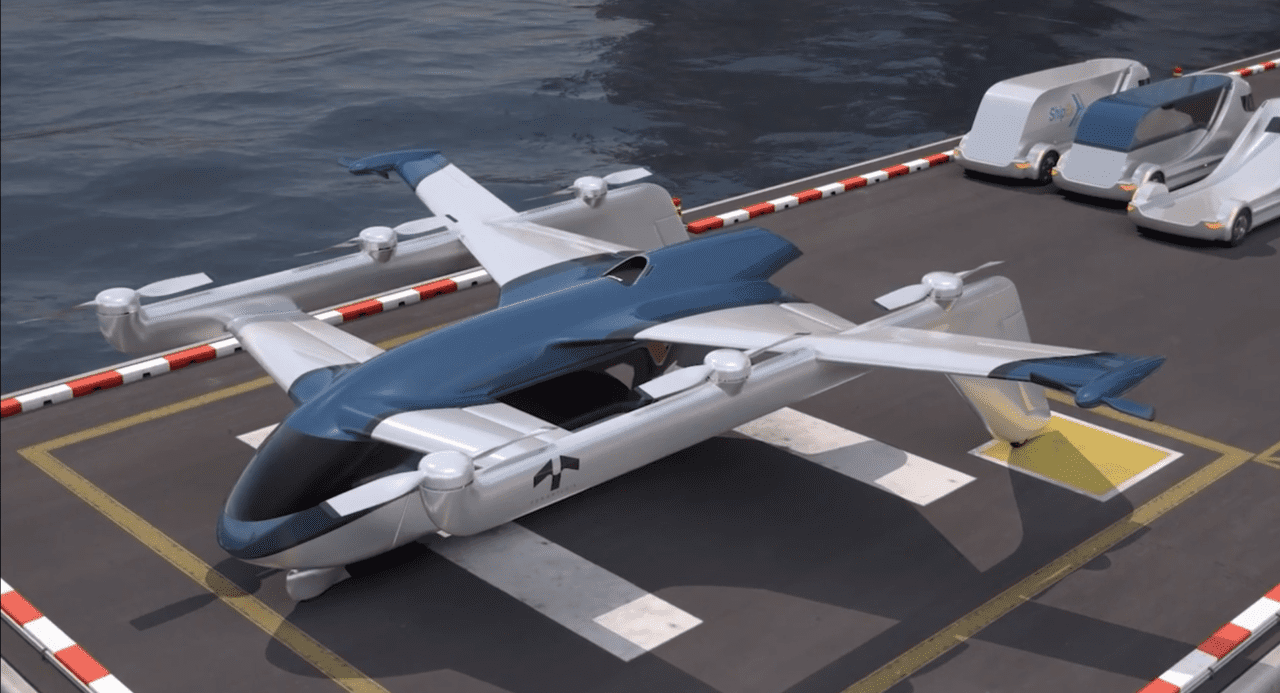
Concept artwork for the distributed-propulsion EVTOL aircraft Embraer-X is developing for Uber. (Embraer-X)
Industry insiders say the primary roadblock to unlocking urban air mobility (UAM) as a market in the U.S. is not technology, but public acceptance and airspace integration.
"The technology is ready," said Troy Rutherford, senior program director at Boeing NeXt. "It's about integration and public acceptance."
Speaking on an electric vertical-takeoff-and-landing (eVTOL) panel at the U.S. Chamber of Commerce's 2019 Aviation Summit Thursday, Rutherford said smart testing will help solve the latter challenge.
"We're learning not just [about] safety from UAS but integration into society," he said. "You have to create test cases earlier...There are privacy issues, zoning issues; if you don't craft test cases around getting out and exploring those, you put this whole endeavor at risk."
The whole endeavor contains a lot of invested money and even more that stands to be made.
"A hundred million people commute more than 45 minutes every day," said Embraer-X President and CEO Antonio Campello. "Can you imagine how much we can capture if we have this kind of EVTOL?"
The Embraer subsidiary is aligned with Uber in its Uber Elevate effort and showed off an air taxi concept last year. Sao Paolo, the capital of Embraer's home country of Brazil, is notable for getting around its significant automotive congestion with hundreds of helicopters serving as an on-demand mobility option.
Uber's proposed business model focuses on complementing its ground service with intra-city trips during busy times in congested urban areas.
Rolls-Royce, on the other hand, sees money to be made in EVTOL by focusing on longer trips, according to President and CEO for North America Thomas Bell.
"We're very focused on not the small hops with small packages, but how you use hybrid to displace something that's happening today," he said. "250, 500 mph [flight] with 5 people is our interest and where we see a return."
Anna Dietrich, cofounder of flying car startup Terrafugia, said it's a mistake to look at EVTOL technology only in terms of where it can oust current vehicles from their roles.

An image of Terrafugia's new TF-2 concept, which featured a pod that attaches to both a flying and wheeled construct for air and ground travel. (Terrafugia/AVI screenshot)
"It's easy to try to shoehorn a business model into our current way of thinking about aviation," she said. "I've done a lot of study about the automotive industry and there's a lot to learn there. The automotive industry created the suburbs … I'm excited to see what this creates other than just being a better helicopter."
To create anything, UAM will need to be integrated into the National Airspace System. The FAA has often regulated by proxy, extending and stretching current rules or using past decisions and precedent for new ones. As such, the drone landscape is instructive for air taxis. Drones are also still being integrated, but lawmakers and regulators have been working on the topic longer, and drones share air segments and some qualities with proposed air taxis – especially including autonomy as a goal.
To that end, FAA Executive Director of the UAS Integration Office Jay Merkle was present to discuss lessons for the air taxi industry.
"It's a web, an ecosystem, of safety," Merkle said. "When we first started integrating UAS, we thought very discretely about operator, aircraft and operation… now we think about them as one interconnected thing."
The FAA has "transitioned away from enabling by regulating first," Merkle said, instead allowing operations with limited controlled risk. He said the FAA started by applying the same risk methodologies to UAS as to commercial aviation, which didn't facilitate the industry's growth.
"We have policies in place [now] to enable beginning growth, but our challenge will be scalability and keeping pace," he said.
Campello said Sao Paolo has great infrastructure for UAM with its helicopters, but scaling is a roadblock there too. And without it, the business case for companies doesn't work. They need the volume – Uber, for example, has projected 1,000 launches per hour from each skyport (not currently possible under FAA rules regulating vehicle separation) during peak travel times – to bring down costs.
But given the amount of money to be made, and the fact that roads in big cities have just gotten more and more congested since the 1980s, companies are betting on getting everything ready: battery technology, FAA certification, airspace integration and the public getting on board.
Campello predicted UAM aircraft flying in two years, operations initiated in five and suggested autonomy is reasonable within the decade.
Dietrich shied away from a firm prediction but said that "people always dramatically overestimate what they are capable of doing in a year or two and dramatically underestimate what they're capable of doing in 10 years."
Merkle pointed out that the FAA currently has one type-certification project ongoing for an air taxi vehicle and that Uber changed its petition for Part 135 status as an air carrier to Uber Elevate.
"It's here today. It's going to happen much quicker than you think," he said. "Cities like Los Angeles looking at the 2028 Olympics and making that a goal across the city is a great driver."
